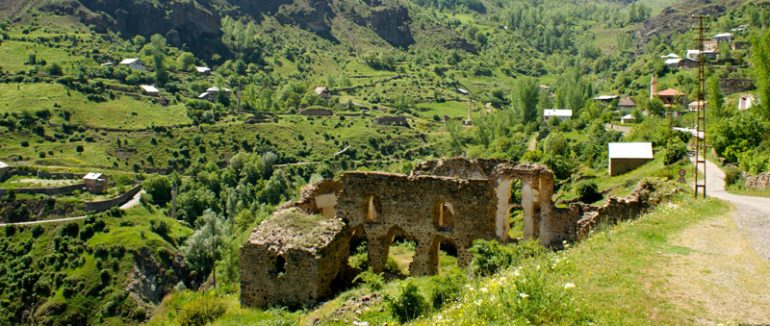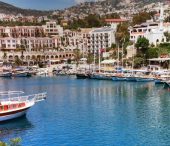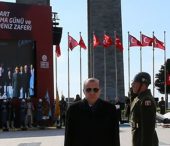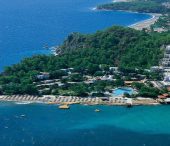Gümüşhane is a city in northeastern Turkey and the seat of Gümüşhane Province. The city lies along the Harsit River, at an elevation of 5,000 feet (1,500 m), about 40 miles (65 km) southwest of Trabzon. The name literally means "silver town" and is derived from the silver (Turkish gümüş) mines nearby. Its name is a direct translation of the ancient Greek name of the city, Argyroupoli 'silver city'. Other "silver" localities include Argentina, Argenteuil and Srebrenica.
The old city was first settled ca. 700 B.C.E. by Ionian Greek traders from Trapezus who were the first to find silver in the region. They called the settlement Thyra or "doorway" in ancient Greek. The silver mines were mentioned by Marco Polo and the medieval North African traveler Baṭṭūṭa.
After the mines were worked out, Gümüşhane became a fruit producer (chiefly apples and pears); its position as a transit station between the port of Trabzon and western Iran also contributed to its prosperity. Russian occupation during World War I (20 July 1916 - 15 February 1918) left half of the old city in ruins; the new city built since then is now the commercial and administrative centre. Nearby historical buildings include partially ruined castles, Turkish baths, mosques, and several Byzantine churches. In 1911, "the population was about 3000, who were mainly Greeks, who had emigrated great distances to work in the mines, and supplied virtually the whole lead and silver mining labor in Asiatic Turkey. The Greek bishop of Gümüşhane had under his jurisdiction all the communities engaged in this particular class of mines". Some of the Greeks who were expelled during the 1923 population exchange between Greece and Turkey settled near Athens, where they called their neighborhood Argyroupoli.










